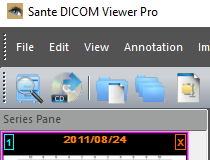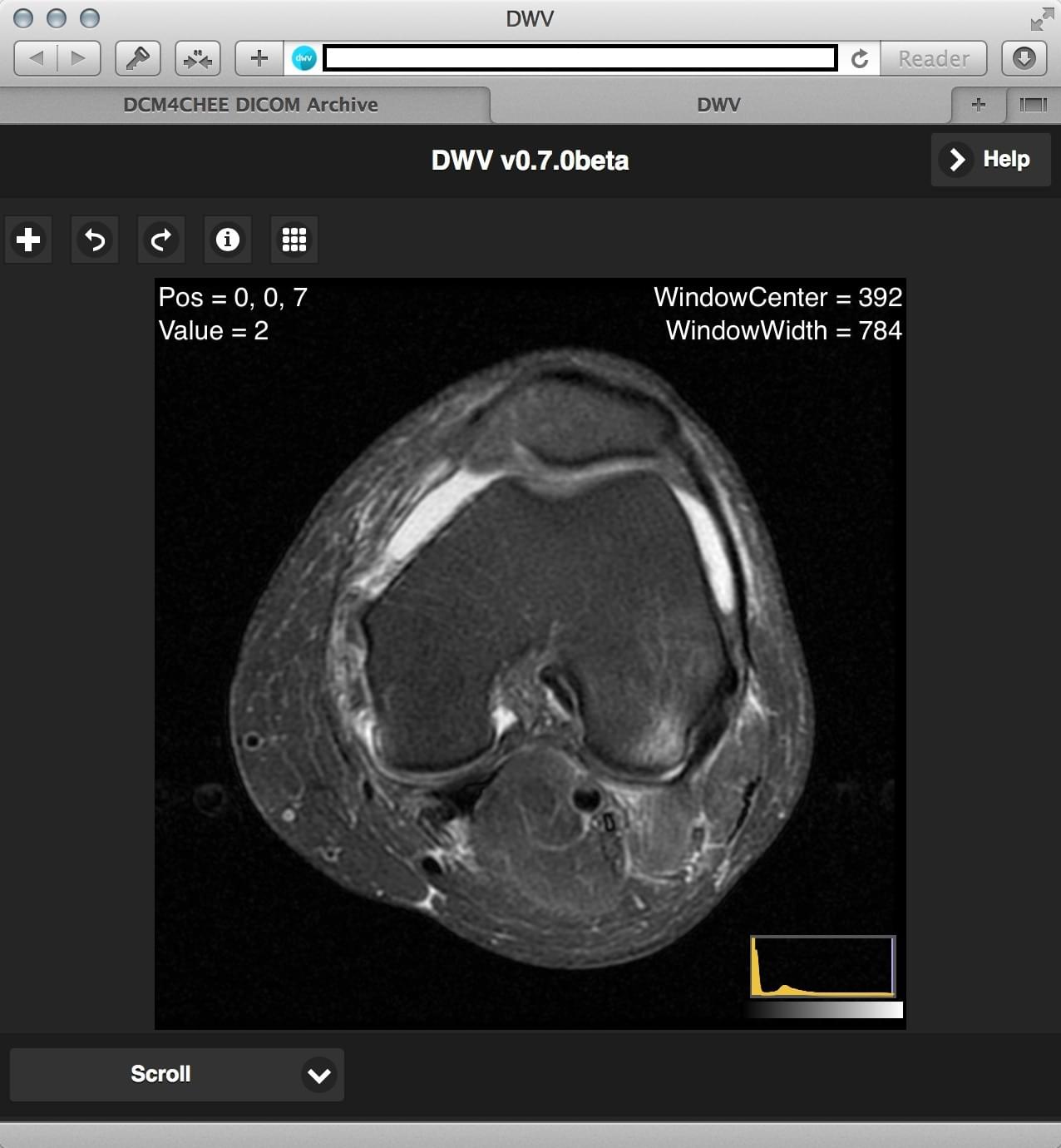Create Dicomdir From Dicom Files Viewer
The ORPALIS DICOM Viewer is a free tool for medical staff (like physicians, dentists, veterinarians, students in medicine and so forth) as well as for anyone else needing to view files in the specialized DICOM format.
Now you export common graphics image file (JPEG, BMP, PNG, GIF, TIFF) to DICOM image. Start MicroDicom DICOM viewer. Open DICOMDIR or Scan for DICOM files.(File menu) or open DICOM file. On your desktop, right-click on an empty space. Go to “New” and click “Folder”. A folder will appear with highlighted blue text. Type in the patient name and push “Enter” on your keyboard. The ORPALIS DICOM Viewer is a free tool for medical staff (like physicians, dentists, veterinarians, students in medicine and so forth) as well as for anyone else needing to view files in the specialized DICOM format. DICOM stands for “Digital Imaging and Communications in Medicine” and it is the standard format for medical imaging. This example shows how to create an image datastore from a collection of DICOM files containing 2-D images. Specify the location of a directory containing 2-D DICOM image files.

DICOM stands for “Digital Imaging and Communications in Medicine” and it is the standard format for medical imaging.
To learn some more about DICOM format, just check the blog article we’ve dedicated to it.
The ORPALIS DICOM Viewer is based on our GdPicture.NET SDK, it was written in WPF (Windows Presentation Foundation) and, like all our products, it runs on any 32- or 64-bit Windows Operating Systems starting with Windows XP / NT up to the latest ones.
Supports all DICOM file types from version 1 to version 3.
Support DICOM files with multiple embedded images.
Multithreaded files loading.
Load single DICOM file or multiple files located in the same folder.
View all attached tags (Patient, Study, Physician, Image).
Adjust Window Level (WL) and Window Width (WW) by mouse interaction.
Explore multiple frames via a thumbnail viewer using the scrolling feature.
The story behind ORPALIS DICOM Viewer is quite simple and actually, it is similar to the stories behind PaperScan and ORPALIS PDF Reducer.
The starting point was testing of the -then- latest versions of GdPicture.NET SDK.
For DICOM files, an open-source simple example for GdPicture.NET customers followed shortly and the results were so amazing that we decided to add features in order to create a fully-fledged software tool so anyone needing to view DICOM files will be able to use it for free.
Unlike PaperScan, ORPALIS PDF Reducer or the other free tool from our Labs, the free Virtual Barcode Reader Free, the ORPALIS DICOM Viewer is, as a premiere, written in Windows Presentation Foundation (WPF) so developers using GdPicture.NET toolkit can get a clear idea of how efficient our SDK is when used in WPF development cycles.
Voila!
Feel free to ask for new features or to discuss and share your impressions on ORPALIS DICOM Viewer dedicated forum section or on our social media pages.
The DICOM File Service specifies an abstract view of files from the point of view of a service user in the Data Format Layer. Constraining access to the content of files by Application Entities through such a DICOM File Service ensures independence of the Data Format Layer functions from specific Media Format and Physical Media selections.
Note
This DICOM File Service definition is abstract in the sense that it is only the specification of a boundary. Its focus is limited to the aspects directly related to the access to the data structures of the Media Format Layer (not the specifications of the data structures themselves). Even though the DICOM File Service may be described by means of a number of abstract primitives such as read, write, delete, etc., it is not intended to be the definition of an Application Programming Interface (API).
The DICOM File Service specified for Media Storage offers a basic service, simple enough to be supported by a wide range of commonly available Media Format (or file systems), but rich enough to provide the key functions to effectively manage files and access their content. The following sections specify the minimum mandatory requirements that shall be met by any physical media and associated media format to comply with the DICOM Media Storage model.
Note
It is acceptable that a specific Media Format offers more file services than those specified in the DICOM File Service. Such services may be internal to an implementation (i.e., not visible through the data structures on the Storage Media). Their usage is beyond the scope of the DICOM Standard. However, in cases where such services are reflected in the file structures of the Media format Layer or in the Data Set encoding an Information Object, the extension of such services in a manner that jeopardizes interoperability should not be done (e.g., File IDs longer than specified in the DICOM File Service).
The DICOM File Service offers the ability to create and access one or more files in a File-set. A File-set is a collection of files that share a common naming space within which File IDs (see Section 8.2) are unique. No semantics is attached to the order of Files within a File-set. Yo gotti momma free download.
Note
The DICOM File Service does not require that Files within a File-set be simultaneously accessible (e.g., sequentially accessed media such as tapes are supported).
The DICOM File Service does not explicitly include the notion of distributing a File-set or a File across multiple 'volumes/physical medium'. However the transparent support by the Media Format Layer of such a feature is not precluded.
A File ID naming space (corresponding to a File-set) shall be associated with an appropriate feature of a Media Format defined structure. This mapping shall be specified in PS3.12 for each Media Format specification (this is integral to the specification of the relationship between any specific Media Format services and the DICOM File Services defined in this part).
Note
An example of such a relationship is to map the File ID naming space to a volume in a personal computer Media Format or a partition in a workstation File System on a removable medium. Another example is to map the File ID naming space to a directory and its tree of sub-directories. In this case it could offer the possibility of supporting multiple File-sets (one per directory) on the same physical medium. Each File-set would have its own DICOMDIR File. To ensure interoperability, PS3.12 shall specify these specific mapping rules between the directories and the File ID naming space of a File-set (including the rules to unambiguously locate the DICOMDIR File).
A single File with the File ID DICOMDIR shall be included in each File-set.
Each File-set shall be uniquely identified by a File-set UID that shall be registered according to the UID registration rules specified in PS3.5. When Files are added or removed from a File-set, the File-set UID shall not change.

A File-set may also be identified by a File-set ID, which provides a simple (but possibly not globally unique) human readable reference. A File-set ID is string of zero (0) to sixteen (16) characters from the subset of the G0 repertoire of ISO 8859 (see Section 8.5). A File-set ID may be associated or mapped to an appropriate identifier at the Media Format Layer. /adobe-acrobat-70-serial-number.html.
Note
How To Create Dicomdir File
Continuing with the personal computer Media Format example used first in the previous note, a File-set ID may be defined to be identical to a volume label.
Non-DICOM Files (Files with a content not formatted according to the requirements of this Part of the DICOM Standard) may be present in a File-set. Such files should not contain the DICOM File Meta Information specified in Table 7.1-1 and may not be referenced by the DICOM Media Storage Directory (see Section 8.6).
Create Dicomdir From Dicom Files
A File-set Descriptor File (a 'readme' file) may also be attached to a File-set. See PS3.3 for a detailed specification of the Basic Directory IOD.